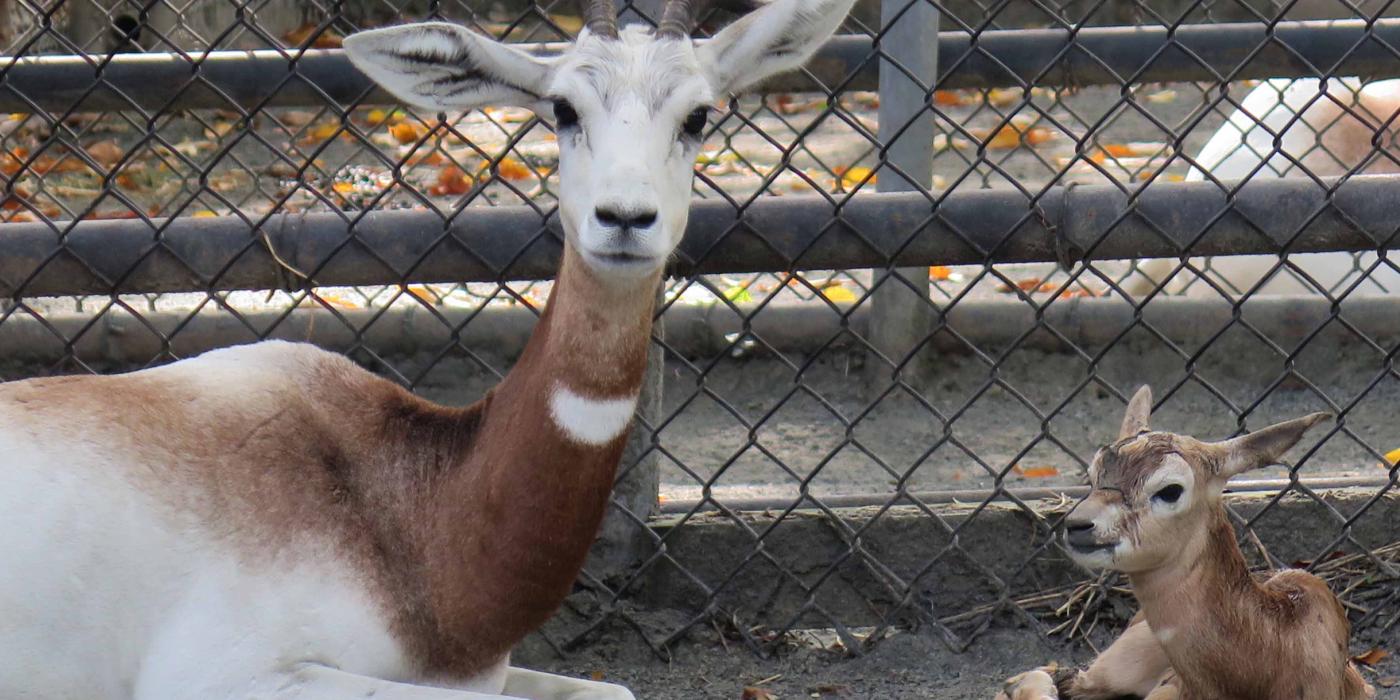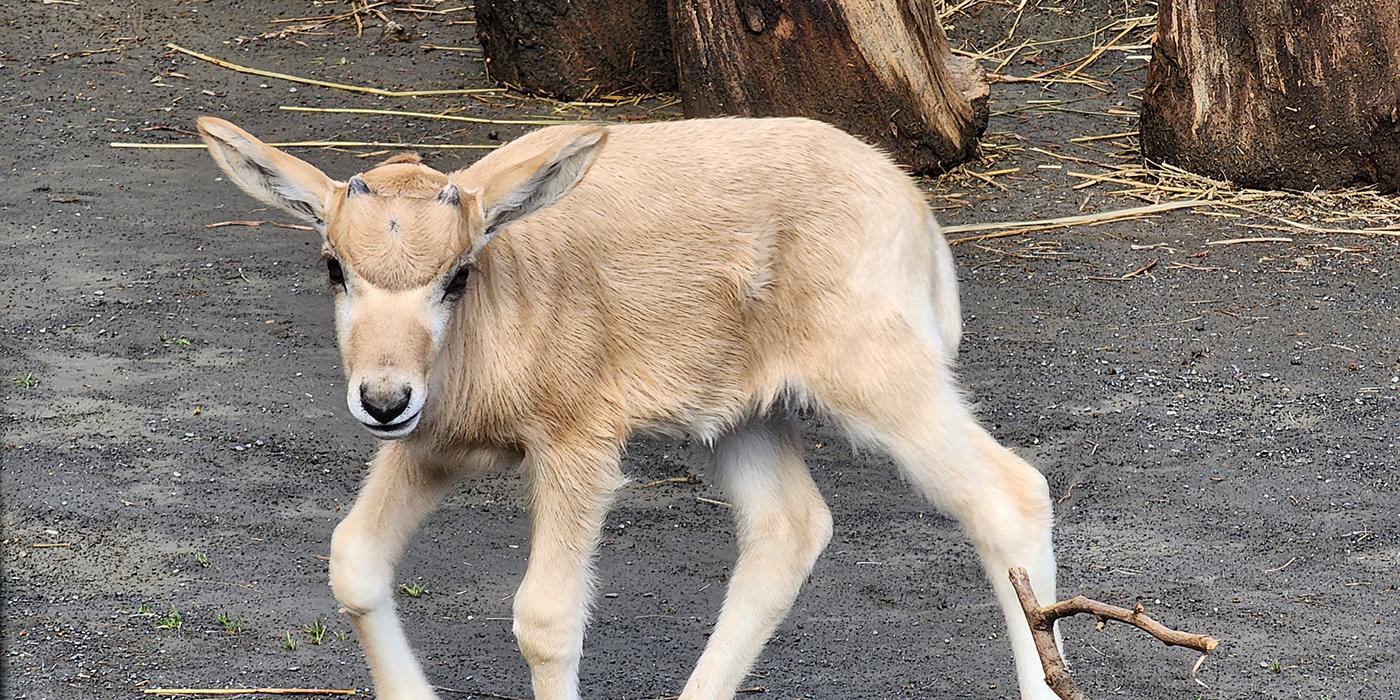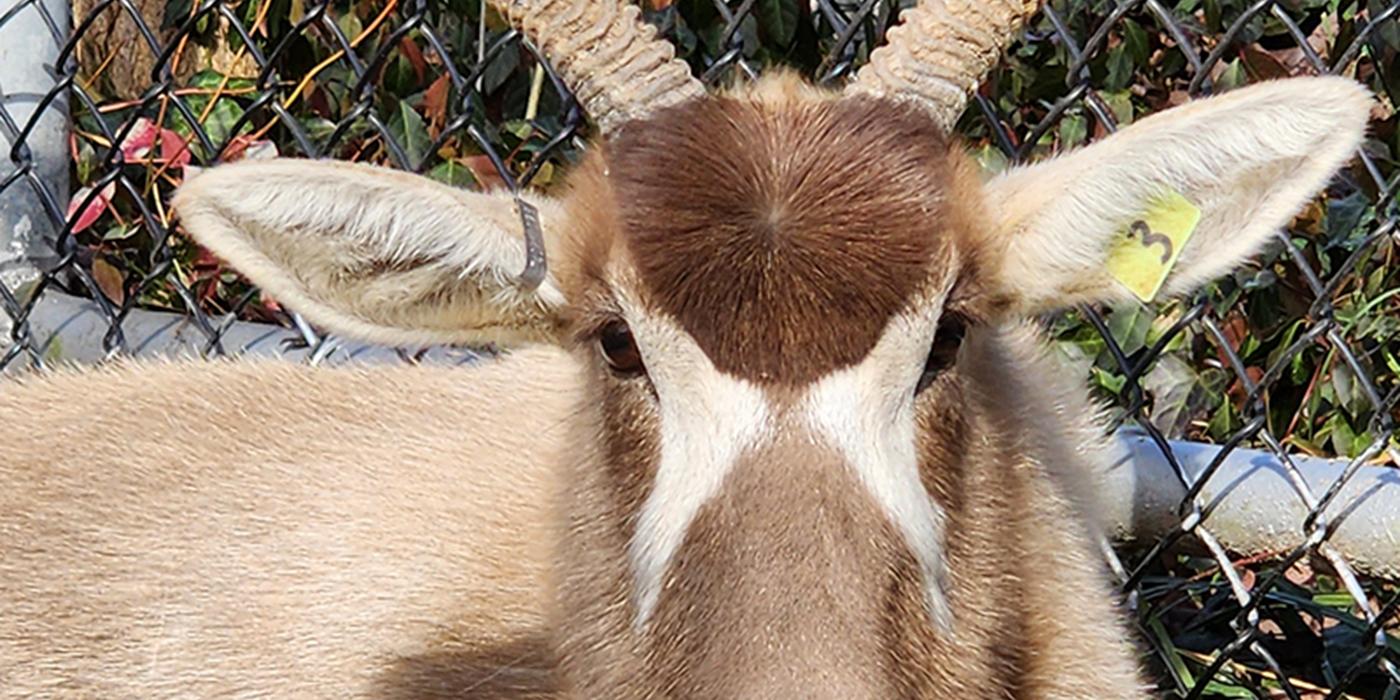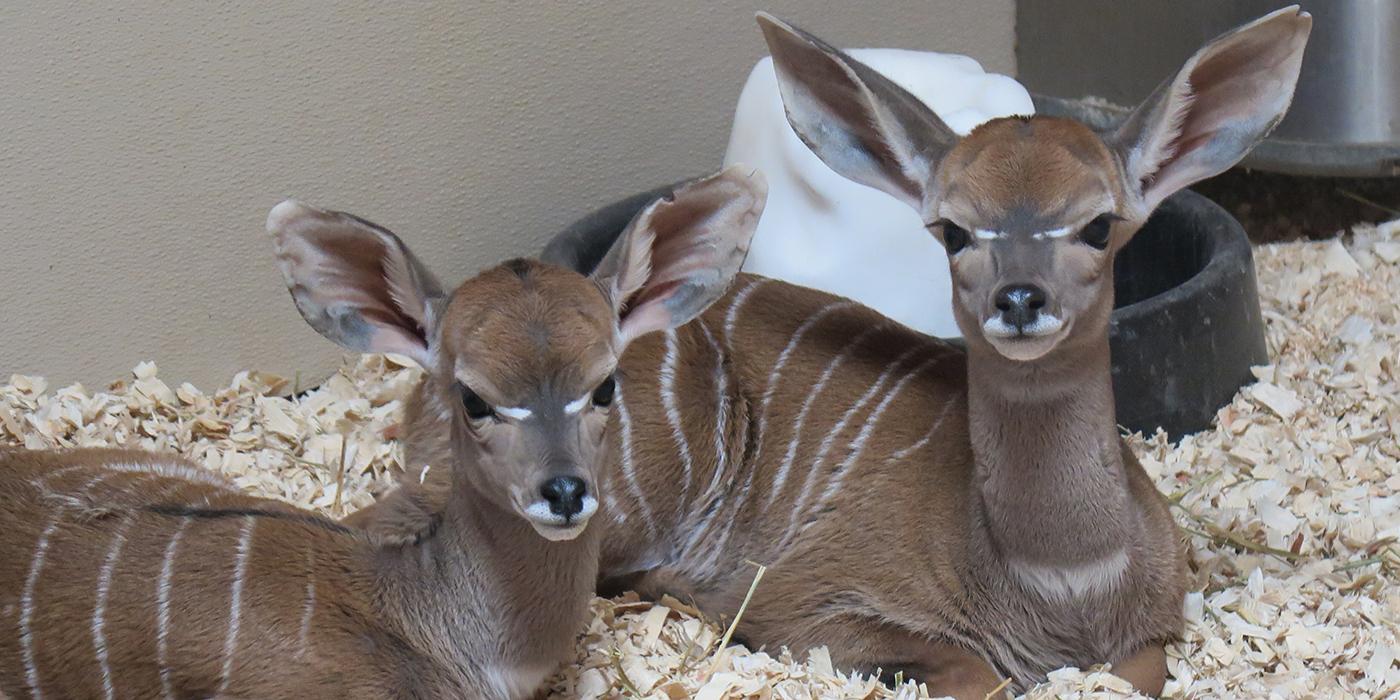Dama Gazelle Dies at Smithsonian’s National Zoo
Cheetah Conservation Station keepers at Smithsonian’s National Zoo are mourning the loss of Zafirah, a female dama gazelle who was humanely euthanized Sept. 12. She was 9 years old. In human care, the median life expectancy of female dama gazelles can be as long as 19 years; in the wild, the median life expectancy of this species is unknown. A full pathology report will provide more information in the coming weeks, but animal care staff had been monitoring her closely over the past year for stiffness in her gait and liver and renal disease.
In fall 2018, Zafirah gave birth to a male calf named Gustav. When she began weaning him in December, keepers noticed Zafirah was experiencing periodic episodes of stiffness in each of her legs and became very selective with the food she would eat in her diet. Over the past nine months, keepers worked closely with Zoo nutritionists to offer her a variety of hay, herbivore pellets and browse (tree branches with leaves) as her food preferences changed and monitored her consumption closely. Although she was eating appropriate amounts of a nutritionally balanced diet, her weight fluctuated from week to week. Zoo veterinarians obtained blood samples from Zafirah, which revealed elevated liver enzymes, an indicator of liver disease. A health assessment in April 2019 revealed that Zafirah had renal disease as well. Both of these conditions can affect an animal’s appetite and ability to gain weight.
Keepers, nutritionists and veterinarians worked together to provide supportive care and treatment for Zafirah. In addition to a modified diet, she received antibiotics, liver protectants, calcium supplements and analgesics. In summer 2019, animal care staff noted that she was showing some improvement overall and gaining weight. Unfortunately, during the past two weeks, she once again had difficulty keeping on weight, and the stiffness in her legs worsened. Due to her poor prognosis and declining quality of life, animal care staff made the decision to humanely euthanize her.
Zafirah was born at the Zoo in October 2009 and participated in the Association of Zoos and Aquariums’ Species Survival Plan (SSP). The SSP scientists determine which animals to breed by considering their genetic makeup, nutritional and social needs, temperament and overall health. She contributed three offspring to her species’ survival and served as an educational animal ambassador, illustrating the social nature and behavior of Dama gazelles to scientists, keepers and Zoo visitors. Keepers fondly remember Zafirah as the most laid-back member of the dama gazelle herd who seemed to enjoy husbandry training sessions and had a taste for leaf-eater biscuits. As a mother, she was dedicated to and protective of her calves, chasing away Ruppell’s griffon vultures Tuck and Natalie if they came too close to them for her liking.
Visitors can view three female Dama gazelles—Adara, Fahima and Amaya—at the Cheetah Conservation Station, along with two other species that share their habitat: Ruppell’s griffon vultures and scimitar-horned oryx.
Native to Chad, Mali and Niger, Dama gazelles are listed as critically endangered by the International Union for Conservation of Nature. Less than 500 Dama gazelles remain in the wild due to habitat loss from human and livestock expansion, hunting and drought. SCBI conducts veterinary and reproductive research in order to maintain Dama gazelle populations.
# # #
Related Species:





